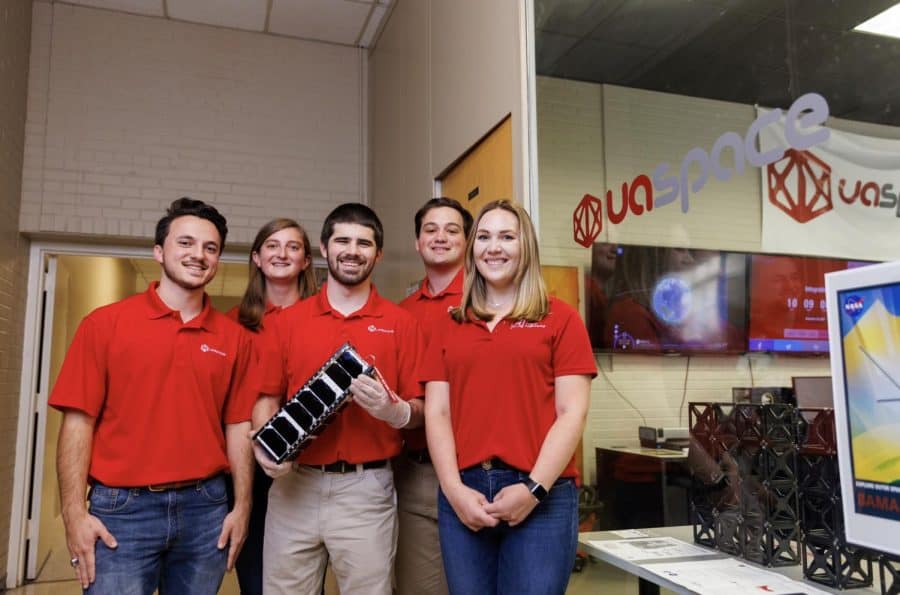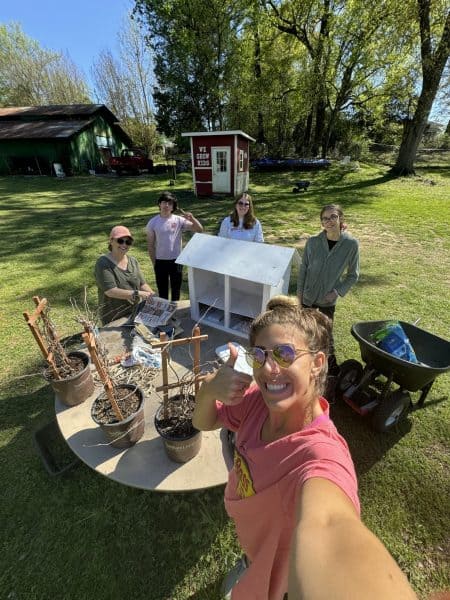Ready for liftoff: UASpace launches satellite
February 4, 2022
Update on Sunday, Feb. 6, at 9 p.m. Due to a radar system issue on Saturday, Feb. 5, NASA’s launch of ELaNa 41is now scheduled for Monday, Feb. 7.
In a tweet, Space Launch Delta 45, said they’ve isolated the radar system issue and are working on a solution.
“We were disappointed that we didn’t get to watch the launch on Saturday, but we’re excited for the next launch opportunity and hopefully everything will be a go,” said Abby Feeder, the project manager for the BAMA-1 CubeSat program.
UASpace’s BAMA-1, a small CubeSat satellite, will launch into space this Saturday, Feb. 5.
Nine UA students are traveling to Cape Canaveral, Florida, to watch the launch in person. Members, advisers and supporters of UASpace can watch the launch through Astra’s livestream beginning at 11 a.m. CST.
BAMA-1 will launch from Rocket 3.3, created by Astra, a company founded in 2016 that makes low-cost rockets, and will orbit 312 miles above Earth. This will be the first rocket Astra has launched with a commercial payload and the first satellite launched into space by The University of Alabama.
In fall 2019 UASpace wrote a proposal to NASA to be part of the CubeSat Launch Initiative. In this program, NASA partners with schools and universities to launch CubeSats into space.
In 2020 NASA announced the satellites chosen to be part of the 11th round of the initiative; The University of Alabama’s BAMA-1 was one of them.
BAMA-1, a satellite the size of a loaf of bread, is testing drag sail technology. This technology will eliminate excessive space debris and shorten the deorbiting time of satellites.
John Baker, the faculty adviser for UASpace and a professor of aerospace engineering and mechanics, said excessive space debris is a current issue.
“The concern is that at some point in time you will get cascade collisions,” Baker said. “There will be so much debris that it will remove the ability to effectively use that orbit for satellites. It’s important that we start deorbiting things when they are at the end of their useful life, and the drag sail will do that.”
Ian Noonan, the president of UASpace and chief technical officer of BAMA-1, said a satellite with current technology deorbits in an average of five years, but he foresees that BAMA-1’s drag sail technology will deorbit in anywhere from 50 days to five months.
Noonan, a fourth-year aerospace engineering and MBA student, joined UASpace, formerly a “CubeSat club,” in 2018 after hearing Baker encourage engineering students to join.
“I’m very proud of this group and the work we have accomplished,” Noonan said. “I’m grateful to have been given this opportunity.”
Baker said the goal of UASpace was not just to create the CubeSat.
“The goal was also to inspire the next generation, especially in areas of Alabama that may not see the opportunity to go to college or participate in something like this,” he said.
UASpace has worked with local middle and high schools to encourage space exploration and engineering. In March 2020, the group created educational YouTube videos and worksheets. The worksheets cover science and math skills while also explaining UASpace’s CubeSat program for students in kindergarten through 12th grade.
Because the project has taken almost three years to complete, many students worked with BAMA-1 but graduated before the launch.
“We are really proud of these students who have gone through this program and the teams that we have. We have hit roadblocks, but we have found solutions together,” said Rohan Sood, a faculty adviser for UASpace and a professor of aerospace engineering and mechanics.
Mike Pope, an adviser for UASpace and a marketing professor, encourages students of all majors to join UASpace. In addition to learning about space exploration and engineering, students also learn program management and skills to communicate about technical subjects.
“I think I am most excited for the students who have come through, supported the program and are in industry now,” Pope said. “Just to be at this stage is very gratifying. We helped, but most of it was on the students’ shoulders.”
Abby Feeder, the project manager for the BAMA-1 CubeSat program, will graduate this spring with an MBA and master’s degree in aerospace engineering. Feeder said UASpace is in the beginning phases of planning its next CubeSat, BAMA-2.
“We are going to see how the [BAMA-1] launch goes,” Feeder said. “We are going to take that and make the next generation by adding in new technology, broadening the scope of what we want to do as its mission, and get as many students involved as possible.”
Feeder said UASpace will work with members, NASA and industry partners to decide what mission is best for BAMA-2.
NASA funded the BAMA-1 CubeSat’s launch from Astra’s Rocket 3.3. Lockheed Martin, Linc Research and the Alabama Space Grant Consortium funded the creation of the BAMA-1 CubeSat. UASpace has also received donations from the UA aerospace engineering and mechanics department.
Correction on Monday, Feb. 7: The CubeSat was made my UASpace, not Astra. The satellite will launch from a rocket made by Astra.











